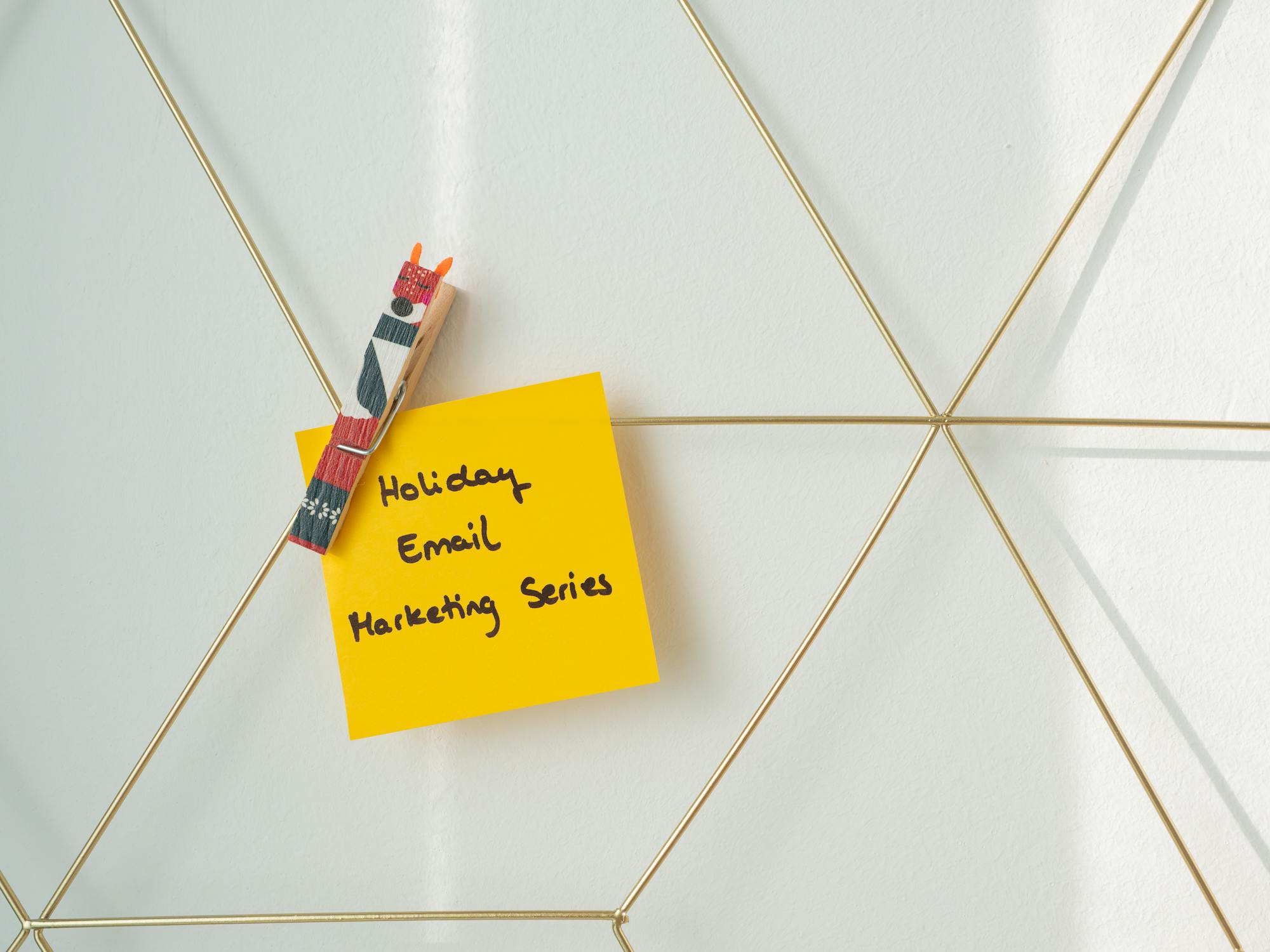
Pros and Cons of Shopify Marketing Tools
Author: Tom HallUnderstand which tools can deliver the best outcomes for your brand, products, and customers.
Read →Starting a Shopify store can feel like jumping into an ocean without knowing how to swim. With so many aspects to juggle, from product sourcing and marketing to customer service and website optimization, there’s a steep learning curve. If I could go back to the early days of my journey, there are a few key lessons I’d love to share with my younger self—and with anyone just starting out.
Don’t try to be Amazon.
Spend time understanding your ideal customer.
Invest time in learning the basics of SEO.
Start with a modest ad budget
Professional, high-quality product photos are worth the investment.
Invest in your customer relationships.
Optimize your store for speed from the get-go.
Set up email marketing early.
Don’t get too attached to your first ideas.
Automate as many tasks as possible.
One of the most common mistakes new store owners make is trying to sell everything to everyone. The temptation to offer a wide variety of products is real, but it’s much better to focus on a specific niche. The more targeted your store is, the easier it is to market to the right audience and build brand recognition.
A tangent to this but related to focus - I learned that using a simple ToDo app can really help. Write down everything you can think of that needs to get done and then prioritize. Don't put too many things on one day. For every decision, ask yourself if there's an easier way to get you enough of the way there. This will help you stay focused and not get overwhelmed.
Lesson: Don’t try to be Amazon. Find a niche that you’re passionate about or that solves a specific problem for a specific group of people. A small but dedicated audience is more valuable than a general audience that’s harder to convert.
It’s easy to get caught up in the excitement of setting up a Shopify store and forget the most important factor—your customers. You need to understand who they are, what they need, and how your product will improve their lives. Customer research should come before product decisions.
HubSpot has an awesome tool to better identify and understand your ideal customer, also known as a buyer persona. You can use their tool here. It will walk you through step by step to help you create a detailed buyer persona for your store. Make two or three of them to start and reference them when you make your marketing plan (and any big decisions).
Lesson: Before investing in inventory or designing your website, spend time understanding your ideal customer. What are their pain points, desires, and habits? This insight will guide everything from product development to marketing strategies.
Search engine optimization (SEO) is something I neglected in the early stages of my store, and it’s something that hurt my traffic and discoverability. Google organic traffic can be a goldmine, but it takes time and consistent effort to build. Optimizing your product descriptions, page titles, and blog content early can have a lasting impact.
Backlinko has a great SEO roadmap that is beginner-friendly and free. So many great resources can be found at that site, but this one is a great one to get started with.
Lesson: Invest time in learning the basics of SEO. Use tools like Google Keyword Planner or Ubersuggest to find out what your customers are searching for, and optimize your Shopify store accordingly. This helps you rank better and brings in long-term traffic without the ongoing costs of ads.
Many new Shopify store owners fall into the trap of pouring too much money into paid ads, especially Facebook or Instagram ads. While these can be effective, they can also drain your budget quickly if you don’t have a solid strategy. Worse, ads can bring traffic that doesn’t convert, leading to wasted ad spend.
I personally have sunk tens of thousands of dollars into Facebook and Google ads and have seen very little return on investment. I didn't fully understand my unique value proposition and who I was even trying to sell to. Ads can make a huge impact, but they are not a replacement for a solid marketing strategy and understanding your customer.
Lesson: Start with a modest ad budget, but don’t put all your eggs in one basket. Focus on building organic traffic sources through content marketing, SEO, and email marketing. A more balanced approach will give you long-term growth without breaking the bank.
In e-commerce, your product photos are your storefront. High-quality images can make or break your sales. In the early days, I used some basic photos that didn’t do my products justice. Once I upgraded my images, I saw an immediate difference in customer engagement and conversion rates.
Shopify has a plethora of free stock photos you can use to get started. Use Canva to mix and match photos and designs to get a professional look at first and then hire a good designer to take over from there. By that time, you should have a good sense of what your brand is and means and you can guide your designer to create something truly special.
Lesson: Professional, high-quality product photos are worth the investment. If you can’t afford professional photography, learn the basics of product photography. Even using a good smartphone camera with proper lighting and background can work wonders.
When I started, I was too focused on making quick sales rather than building a relationship with my customers. Repeat customers are worth much more than one-time buyers, and the best way to turn buyers into loyal fans is by creating a community around your brand.
Lesson: Invest in your customer relationships. Build an email list early, create content that adds value, and use social media to engage with your audience. Provide excellent customer service and follow-up after sales. A strong community around your brand will lead to word-of-mouth growth and a higher lifetime customer value.
In the beginning, I didn’t pay much attention to the speed of my Shopify store. But website speed is crucial for both user experience and SEO. A slow site can drive customers away before they even have a chance to browse your products, and Google uses site speed as a ranking factor for SEO.
There are many great resources out there to help you with this, but one tool called Booster in the Shopify App Store can help speed things up right away.
Lesson: Optimize your store for speed from the get-go. Use Shopify themes that are lightweight and fast-loading. Compress images, minimize apps, and use a content delivery network (CDN) to ensure your store is running as efficiently as possible.
I underestimated the power of email marketing for far too long. Building an email list should be a priority from day one. Unlike social media, where algorithms control visibility, your email list is yours. It’s a direct line to your customers and one of the most effective tools for driving repeat purchases.
Reach out to get on the waiting list for my email course set to launch soon!
Lesson: Set up email marketing early. Use tools like Klaviyo or Shopify’s built-in email marketing features to create automated email flows—like welcome emails, cart abandonment reminders, and post-purchase follow-ups. Personalized emails can make a huge difference in converting casual browsers into loyal customers.
Not everything will go as planned. I launched products that I thought would be best-sellers, only to see them flop. Some marketing strategies worked, and others didn’t. It’s important to stay flexible and be willing to pivot when things aren’t working.
Lesson: Don’t get too attached to your first ideas. Always listen to your customers and pay attention to what the data is telling you. Be ready to experiment, change tactics, or even switch products if something isn’t resonating with your audience.
In the early days of my Shopify store, I did a lot of things manually—fulfilling orders, sending out emails, responding to customer queries. While it’s important to be hands-on at the start, automation tools can save you a ton of time and reduce errors.
Lesson: Automate as many tasks as possible. Use Shopify apps to automate order fulfillment, customer service (like chatbots), and email marketing. This allows you to focus on higher-level tasks, like strategy and scaling your business, while still providing excellent service.
Starting a Shopify store is an exciting journey, but it’s not without its challenges. There are many lessons to learn along the way, and while some mistakes are inevitable, others can be avoided with the right guidance. By focusing on your niche, building customer relationships, and mastering the key elements of e-commerce early on, you’ll be better equipped to grow and succeed in the competitive world of online retail.

If you’re just starting out, take these lessons to heart. You’ll be surprised at how much smoother the ride can be with a little preparation and a lot of persistence.
Learn how to grow your business with our expert advice.

Understand which tools can deliver the best outcomes for your brand, products, and customers.
Read →
Ten things I wish I knew when I started my Shopify store.
Read →
Shopify offers a variety of marketing tools to help you grow your online store. In this post, we’ll explore some of the key tools available and how they can benefit your business.
Read →